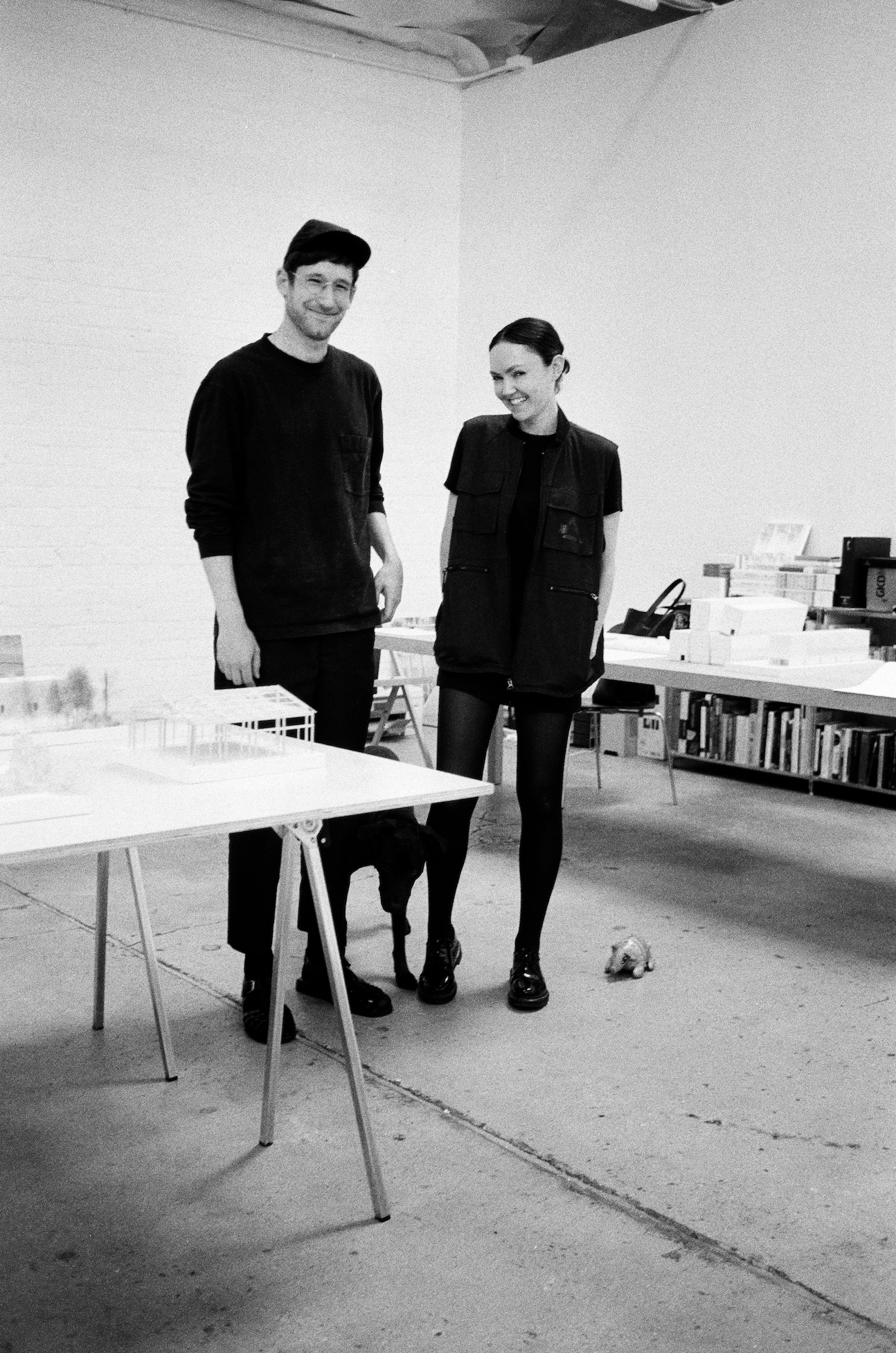SAM CLOVIS &
GEORGINA
BARONIAN
OF: How long have you two been working together and was it a no-brainer to start a company together or a leap of faith?
SC: A little bit of both. We’ve been working together for about three years now. Like starting any business or practice, there is always a certain amount of risk, but the benefit of having creative control over the work is worth it.
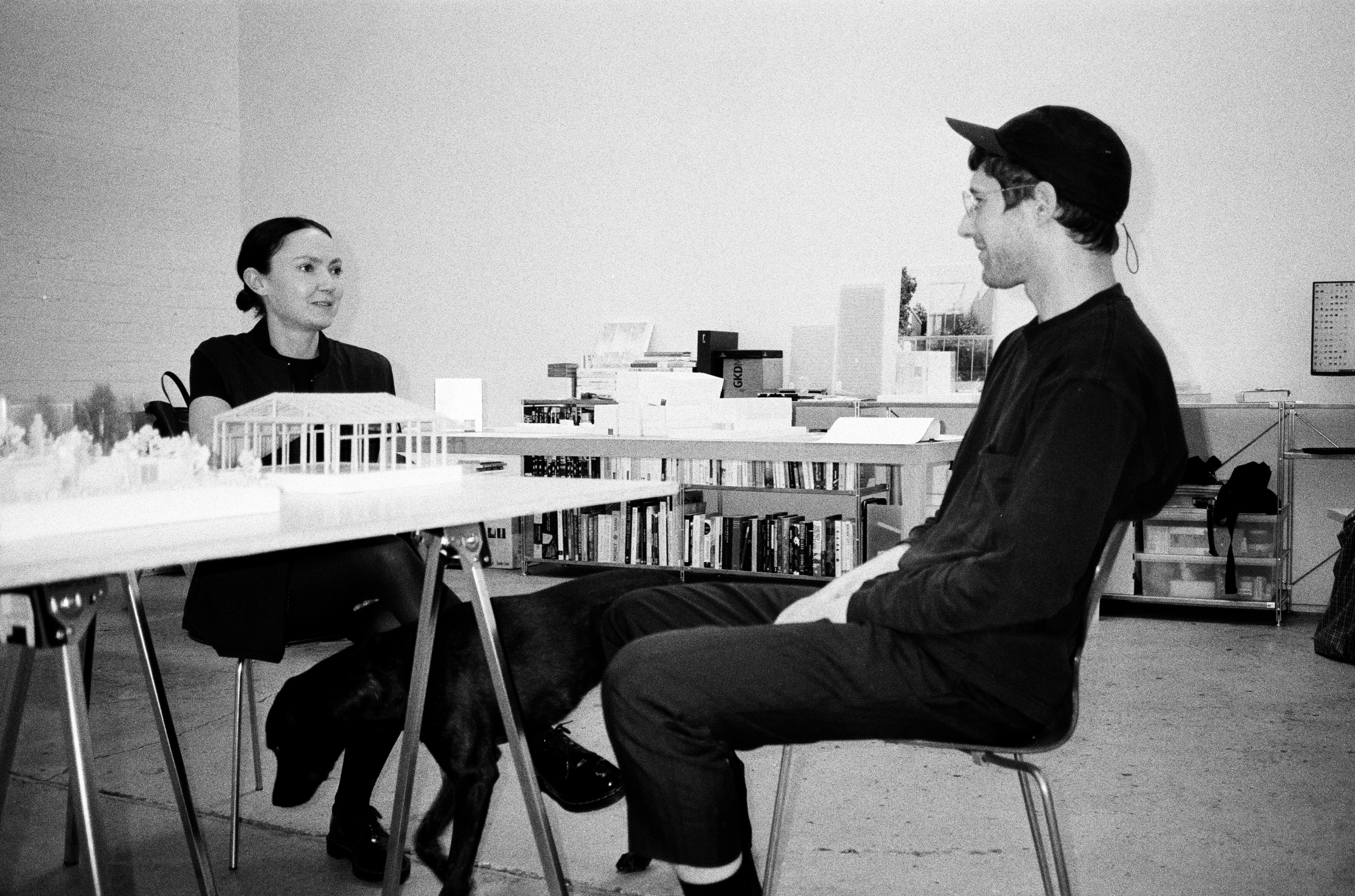
OF: Most of us (at the studios) in art and film are compelled to choose between NY or LA, but architects have many more options... what made you decide to set up shop in LA?
SC: It wasn’t necessarily an orchestrated decision. We came to LA after having spent some time on the east coast, picking up work on smaller projects as they came along. I had lived in LA previously, so I had a bit of experience with the city and had always considered it as a potential landing spot. After some time back here, we’ve also had the opportunity to teach, and found ourselves more at home…
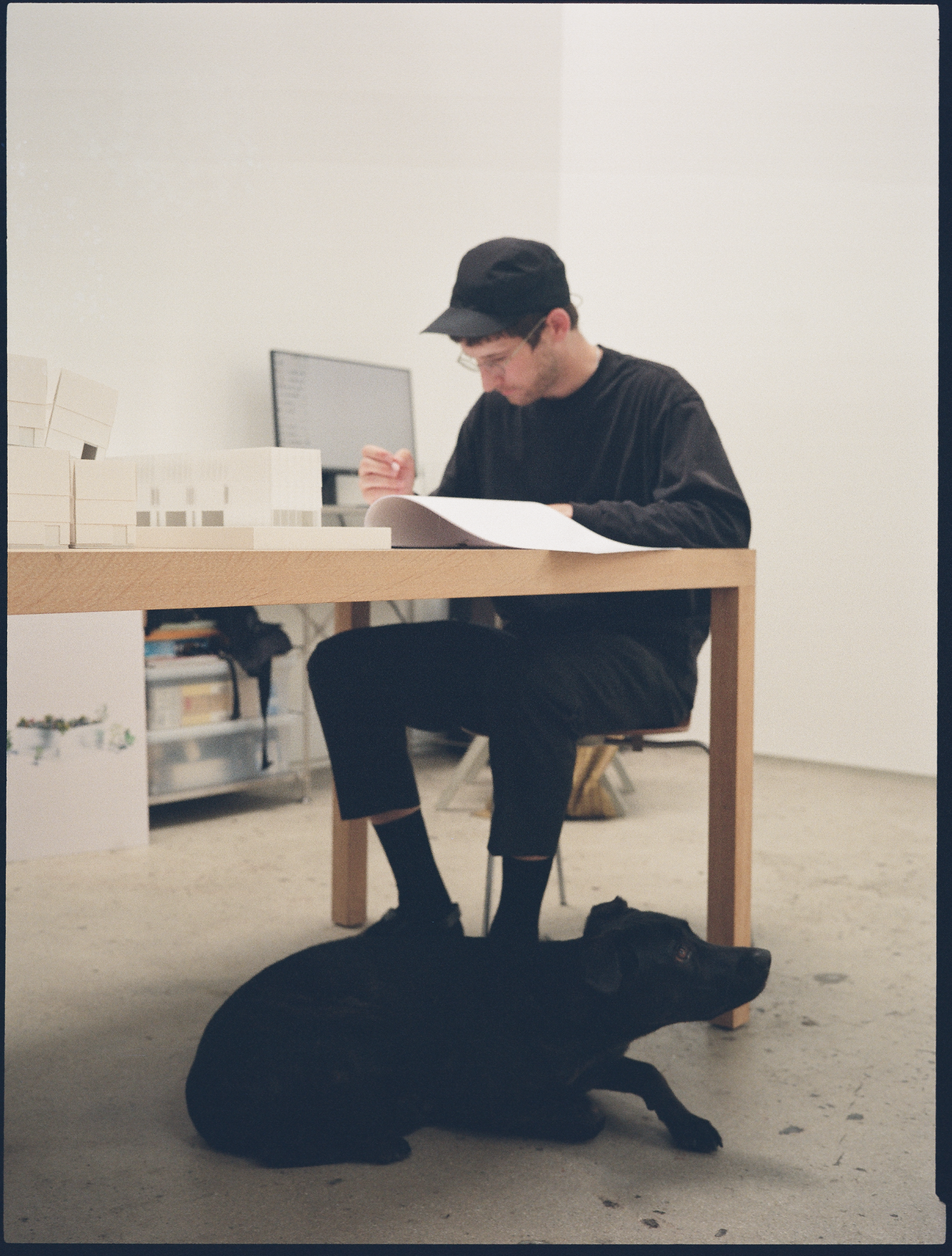
GB: To be honest I thought I would end up in New York. I was working in Tokyo before I came to the US and I will always want to live and practice in a large urban centre. Los Angeles comes with its advantages for a young office though, space being one of them. There are more opportunities for multiple scales of ground-up construction.
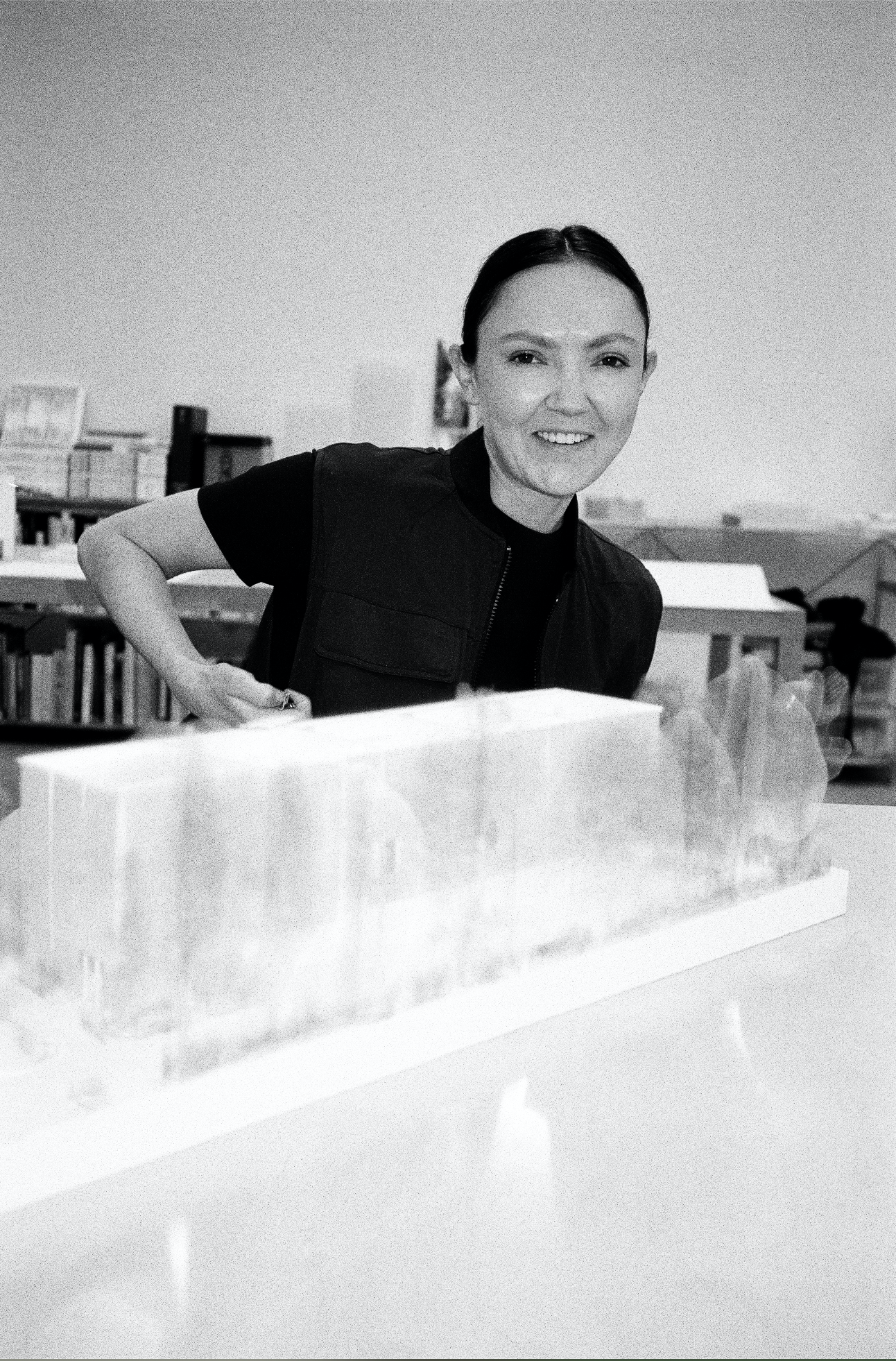
SC: It’s true that architects may have more options in where they practice, but I think at the same time cities like NY or LA are desirable locations for architects for many of the same reasons as those working in film or the arts—proximity to cultural institutions, the ability to more readily engage with other creative disciplines, and communities that, at least comparatively, appreciate and supports these endeavors. This isn’t to say LA is our definitive home. There’s always the potential for us to operate within a more nomadic model, depending on where the work takes us.

OF: LA architecture is a bit bizarre to me and leaves much to be desired, but there’s plenty I love as well. What’s your take on it and do you have any favorite buildings or architects that left their mark on the city?
GB: I would say that LA is a city of forward-thinking and experimental architecture, within a larger soup of pretty terrible buildings. The kind of ahistorical, tabula-rasa conditions of the city’s upbringing sort of presented a double-edged sword… on the one hand it allowed for the mass construction of a post-war privatized suburban order, while on the other it also provided a space for rethinking traditional architectural typologies and experimentation in modernism. Especially in residential works.

SC: There is an appreciation for the sort of kitsch aesthetics that arise from the everyday, scrappy and ad-hoc qualities of the city, though I wouldn’t say this has heavily influenced our work compared to other offices. As cliche as it sounds, the works of Frank Gehry are undoubtedly one of our favorites in the city, particularly the early and quieter works, the Danzinger Residence, Gemini GEL. There is this quality within these projects that I think is emblematic of the experience of Los Angeles, an almost fortified street-facing presence, while still compositionally playful, and a wonderful interiority that is discovered once one moves into the project. I think to some extent this is also something that is characteristic of our recent work, considering a building's perception at the street, from the public, and a sequence of entry or procession through thresholds…
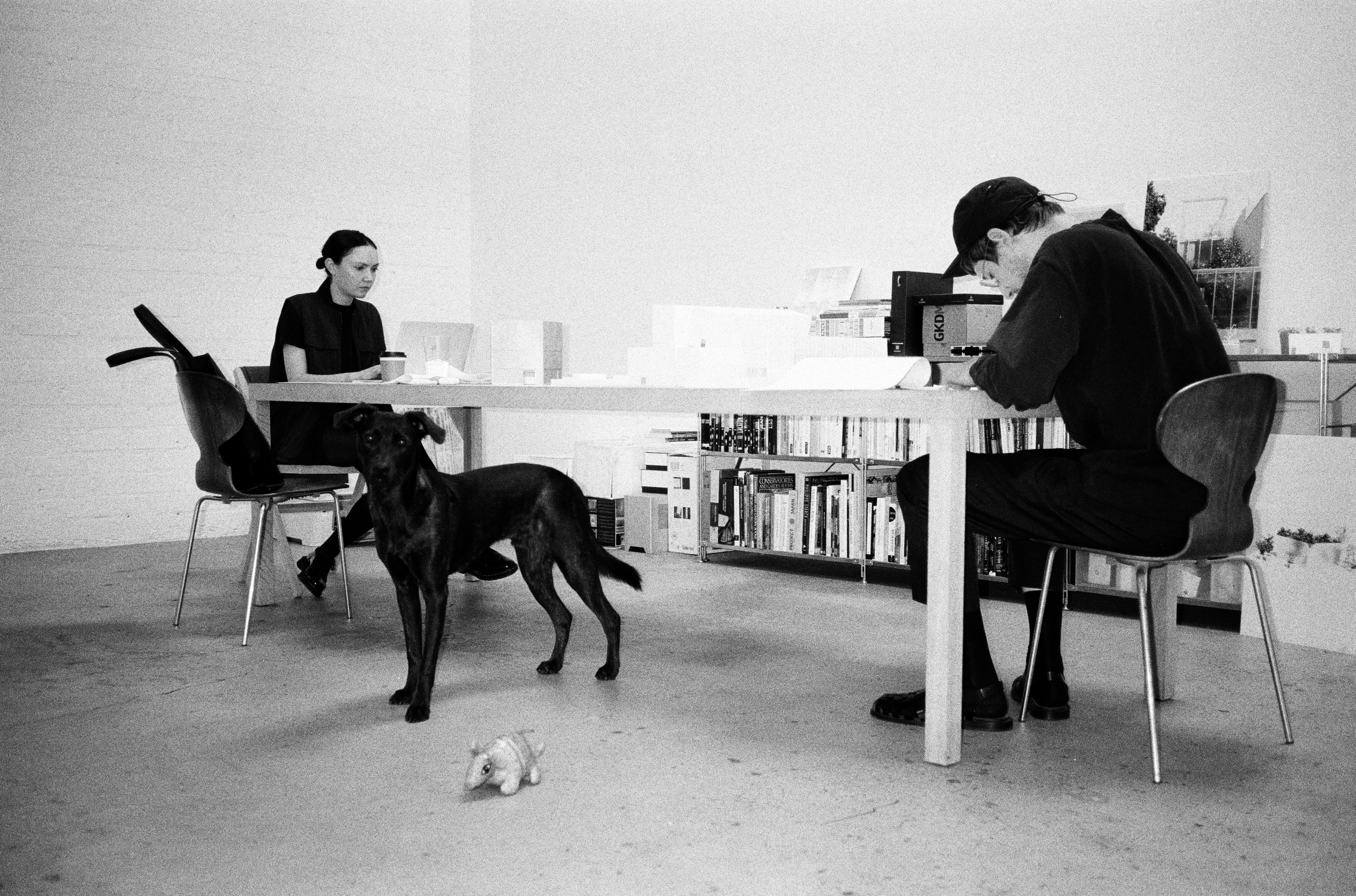
GB: Gehry’s Team Disney building in Anaheim is another example, along the 5. It’s an interesting exploration in how a building responds to the infrastructural scale of the freeway and how one perceives a facade when in motion, through a pattern of color that produces this ephemeral effect—but also its an incredibly monolithic and relentless facade that disguises the formal levity of the rest of the building. I’m also quite fond of some of the prefab houses from the 50’s through the 70’s—Helmut Schulitz and specifically the de Bretteville-Asimow Houses by Peter de Bretteville. There is an airiness to the interiors that really lends itself to the environment of LA.
OF: What would you like to see more of in the future of LA architecture?
SC: Moving forward, I think most are in agreement that addressing the dual crises of climate change and housing affordability should be a priority. Obviously this isn’t solely the responsibility of architects, it demands the collaborative efforts of civic leaders, planners, building and material scientists… The city was designed and planned around an unsustainable model of private low-density development, and we need to radically reconsider these priorities.

GB: I think there is an opportunity for architecture to more directly engage with the environment of Los Angeles. The climate of LA is rather ideal compared to almost anywhere, yet the majority of buildings here don’t take advantage of this. Architects and the public should reconsider the necessary extent of conditioning and comfort, in addition to the more prescriptive performance standards that are being set in place in the name of sustainability. We are currently exploring this in our own work, but the conversation really demands the attention of the entire discipline.
OF: What have you been working on lately and what kinds of projects are you hoping to manifest in the next few years?
GB: We have a few projects underway at the moment. The larger projects include a mixed-use apartment and gallery complex and a multi-family housing project, alongside a few private residences. We also have a few research projects ongoing, including studies in transparent second-skins for improving the environmental performance of historic buildings. These projects often start off as more conceptual exercises that we explore in the office and through teaching, but the goal is always to pursue research that has implications for our future built work.

OF: What’s the creative process like between the two of you? Do you work together on everything or tackle different aspects of a project and then bring the elements together?
SC: Each project usually starts with a conversation between the two of us. We come from very different backgrounds in the way we were taught to approach a project conceptually—me coming from the LA school of thought and Georgina having trained in Japan. But I think this leads to a productive tension, and we tend to arrive at a shared concept for each project. We rely heavily on physical models to explore these ideas before finalizing a design. From there, it's kind of a process of divide-and-conquer.

OF: Architects are notoriously crazy hard workers and I noticed you two are often the last to leave at night. Are you craving more of a work/life balance? Thinking of taking up surfing?
GB: Architecture in any form is a long and arduous process, and pursuing conceptually rigorous work amplifies this exponentially. When designing a building, you are in many ways setting up a problem that you will then have to “solve” through development, details, coordination, etc. We tend to write rather tedious problems.. it’s what makes the work fulfilling and exciting but this does coincide with a great time commitment. We find time where we can.
OF: Who’s the pup?
SC: That’s Paris, he’s the office gremlin.

OF: Favorite artists or albums to listen to while working?
GB: I tend to just grab something from the NTS archive, something long format.
SC: I’ll usually put on something ambient or instrumental, on late night deadlines I’ll indulge in club, house, etc. A few albums and artists I’ve been coming back to lately.-- Patrick Belaga (Blutt), Kali Malone (The Sacrificial Code), Bendik Giske (Surrender), Lara Sarkissian, human mesh dance (thesecretnumbertwelve), Lamin Fofana
